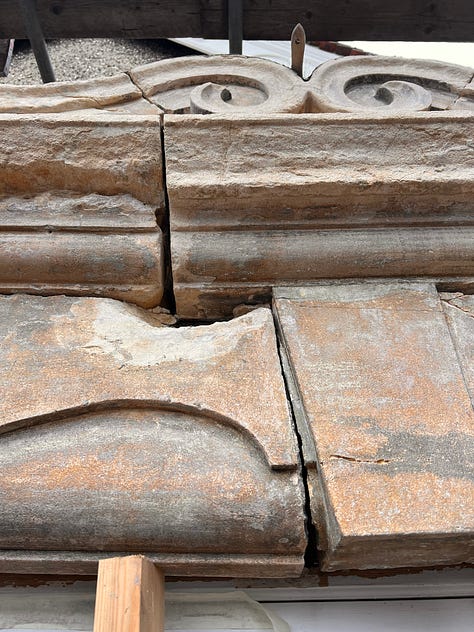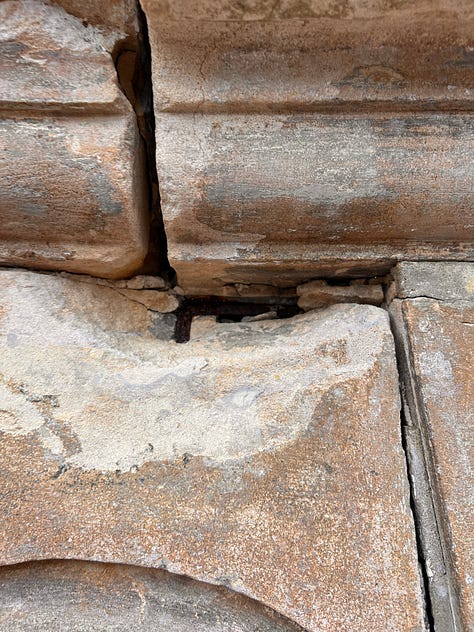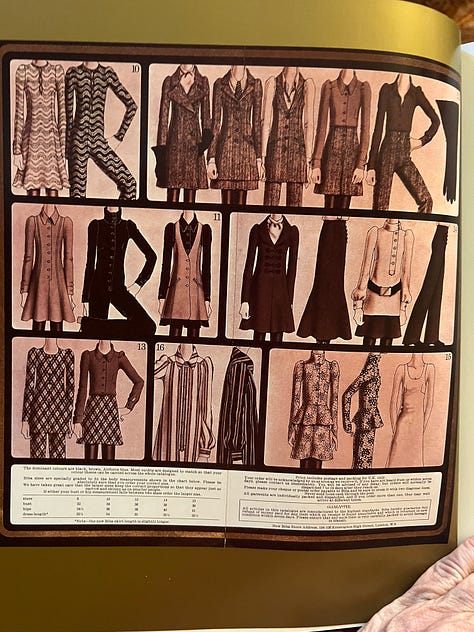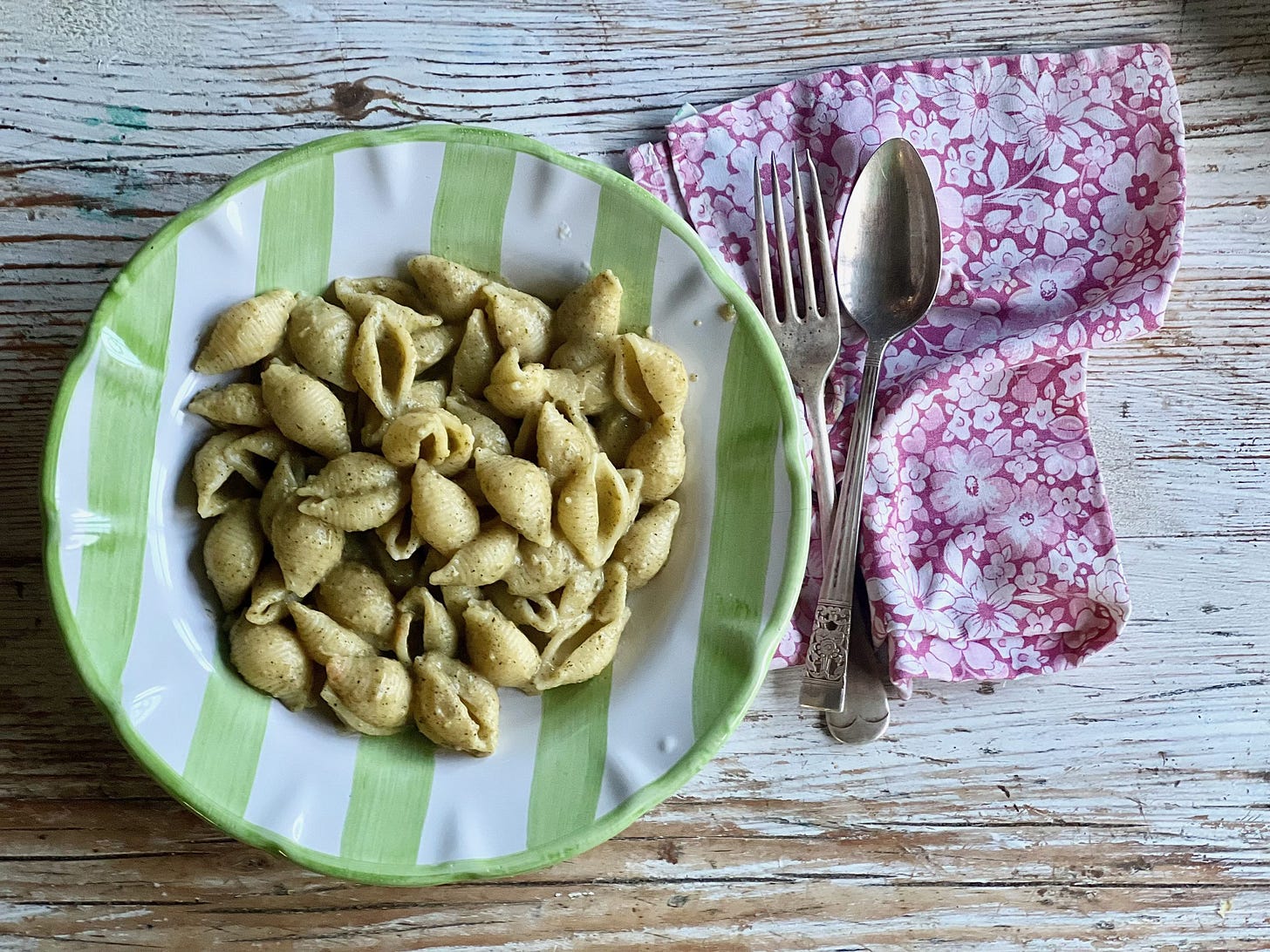I’m looking after my granddaughter this week so don’t have a lot of time to write. My last post seems to have been controversial. ‘Too much information!’ ‘Who is your audience and why are you writing this?’ ‘You’ve invented a new word – diatribetes’.
I’m not writing this for an audience. It’s very very personal. It was hard for me to write. I don’t want pity, I’m not asking for that. I’m asking for more honest conversations about weight, diabetes, and diet.
I will continue with the story of what happened next but not right now.
Recipe: courgettes, charred
Gardeners and allotmenteers will have a courgette glut right now. Here are a couple of suggestions of what to do with them. The pasta sauce recipe is particularly good; light, refreshing and tasty.
Ingredient: Wild fennel flowers


We are just getting to the end of wild fennel flower season. I urge you to collect any remaining flowers - it’s an expensive and rare ingredient so why not obtain it for free.
Here are some fennel flower recipes and ideas at this link.
Home:



We are having the front of our building refurbished. I’m a member of several Facebook groups about Victorian and Edwardian buildings. They are a hive of information. Our building is 1906, and I’m trying to restore it to Edwardian glory. We are supposed to repaint the front every three years, which doesn’t happen, because it’s expensive. My solution was to strip all the paint from the stonework. Good stonework was never supposed to be covered by paint.
In fact brick buildings are not supposed to be painted. The paint, especially modern paint, holds in damp. The Facebook groups recommended the Doff system, a gentle hot water pressure washing system of removing paint and cleaning brickwork. I got in tons of quotes. Most of them recommended re-pointing the brickwork at the same time. It’s important to use the correct materials so lime re-pointing is better than modern cement.
Eventually I plumped for my friend Jim to do the work. He’s been here for five weeks working on it. What I have learnt is: if your building is painted and rendered, the likelihood is that something is being covered up.
We’ve had subsidence in the past 20 years. Removing all the paint revealed that there was serious subsidence even before I moved in, 24 years ago. We also discovered that one of the windows had fake stonework around it - it was modern cement rendering imitating the rest of the stonework.
The cement rendering in parts further destroyed the soft clay bricks - cement is so much harder than the brick, lime pointing or rendering.
We used a brick matching service and found out that our bricks are Sussex Soft Reds, although funnily enough the sides and back of the building are built with another kind of brick, less orange/terracotta and more pink. I prefer the latter. I guess the Edwardians loved strong coloured bricks and used them for the decorative face of the building.
The stonework has serious cracks and fault lines. The bricks above the bay window were barely held in place. We’ve had to put in helibars - basically large metal staples to hold bits of the building together. We’ve chipped out and replaced those bricks and repointed them. Other sections of rendering near the ground have destroyed the bricks - they will have to be dug out and refaced - by cutting bricks into slices. You can’t remove them because the building would collapse.
We will be restoring the stonework with advice and materials from Restorative Techniques and Womersley’s.
I’ve really enjoyed doing the historical research on materials. If I were going to be a builder, this is the area I would specialise in.
I’ve also been researching paint colours for the windows and front door. Brilliant white is a modern invention so other kinds of white are more appropriate. In the past white was only used by wealthy families with servants who could regularly clean it. I’m going to change the white to green which will contrast well with the terracotta bricks and sandstone stonework.
Going out:



I caught the last few days of the Biba exhibition at the Fashion and Textile museum in Bermondsey. I love that street, so many great restaurants and cute coffee bars.
My mum wore Biba and had the catalogues. We used to visit the boutique on Kensington High Street. When they opened the big Biba, the department store that was like Disneyland for lovers of style, I used to visit after school. I discovered that many of my schoolmates were shoplifting. The place was painted black and was dimly lit, so it was heaven for shoplifters.
I remember the pink flamingos in the rooftop garden, the Rainbow Room (the New York Dolls played there), the black and silver wallpaper that I lusted after, the bentwood hatstands with feather boas and felt floppy hats. I’ve still got the black and gold address book with the Biba logo.
My sister still has a child’s tiny printed velvet coat and hat.
The Biba silhouette was long arms, flat chest, arms cut out high so clothes fitted snugly around the shoulders and armpits. It’s clear that the sadly closed The Vampire’s Wife was a homage to Biba. I loved the tiny covered buttons that ran the length of the garment, the Edwardian style high necks, the racer backs, the muted colour schemes of mauve, purple, black, brown.
My mum was so skinny in the 60s - a size 8 was big.
Go see it if you can. Ends September 8th
Ophelia:
Who are we wearing?
I’m wearing sample sale cabbages and roses, she’s wearing a vintage dress from a charity shop in Switzerland, £2!






So interesting Kerstin! Great post!
I love the pic of you 2 *_*